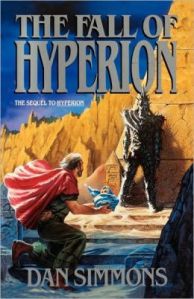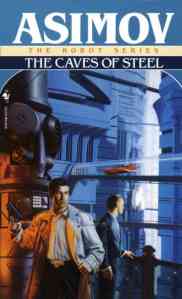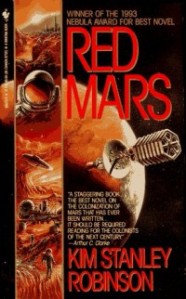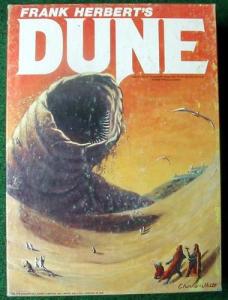Tag Archives: science fiction
Twinja Book Reviews
Now here’s a blog whose time has come:
Despite the name, this blog has nothing to do with twins and it’s only sometimes about ninjas. It’s a site dedicated to promoting multiculturalism in genre fiction. Great idea! In the 90’s, I was frustrated with how fantasy was stuck in a rut of medieval-Europe Tolkien knockoffs. We’ve made great strides to break out of that, but I still see a lot of urban fantasy with white people, paranormal romance with white people, and steampunk smack in the middle of Europe.
I’ve got a wishlist of things I’d love to see a fantasy writer try:
- A fantasy epic that takes place in the medieval Arab world or Asia. More stuff like Across the Nightingale Floor, please! Or what The 47 Ronin could have been if only it had been a good movie. Sigh…
- A steampunk that takes place in British-occupied India. That would be so cool.
- Cultural mix-and-match works like Avatar the Last Airbender (the cartoon) and Firefly.
Have any of you got recommendations for good non-European fantasy writing? Anything you’d like to see?
The Fall of Hyperion by Dan Simmons
 I picked up this book because I’d read Hyperion and I wanted to find out what happened to all of the characters. Sadly, I was disappointed.
I picked up this book because I’d read Hyperion and I wanted to find out what happened to all of the characters. Sadly, I was disappointed.
The first book in the series had a Canterbury Tales conceit. Seven people from all walks of life set off on a pilgrimage to see a mysterious creature, the Shrike. In The Fall of Hyperion, the Canterbury Tales is abandoned and there’s nothing left but straight space opera. The unique voices of the main characters, as they told their own tales, are gone. The entire galactic empire is at stake in this book, but somehow I don’t care.
And it drags. The Fall of Hyperion takes about 500 pages to describe a week’s worth of events. There is an entire chapter devoted to Meina Gladstone wandering through the network of worlds and worrying about things. Entirely too much time is spent rehashing events from the previous book.
Did not finish.
The Caves of Steel by Isaac Asimov
 Science fiction from 1954 is a hoot!
Science fiction from 1954 is a hoot!
Recently I finished The Caves of Steel by Isaac Asimov. In a nutshell it’s a buddy cop story. To be specific, it’s a buddy cop story where one cop is a technophobe and the other cop is a robot. They’re forced to put up with each other in order to catch a killer (and it’s a foregone conclusion that they wind up friends). This might sound like a cliché, but as far as I know, Isaac Asimov was the first writer to try it.
The real fun of this story is how unintentionally amusing the New York City of the future is. It’s the year 2500 or so and Earth’s population has risen to a ghastly eight billion people. All of Earth’s land area has been turned over to cellulose farms* and the world’s human beings squeeze into steel-enclosed cities that look like crosses between Tokyo and Calcutta. The state controls all aspects of peoples’ lives, from where they can live and what food rations they can get to how many children couples are allowed to have. Yet curiously, the state fails to follow through with any form of mandatory birth control (probably because the birth control pill didn’t hit the market until six years after this book was published).
This high-tech New York is filled with millions of nuclear families that look like they walked straight out of Leave it to Beaver. Women primarily work as wives and mothers because they’re too airheaded to do anything else. Where’s Susan Calvin when you need her?
There’s all sorts of little incongruities, too. Eyeglasses drop when you break them because they’re made out of actual glass. Newspapers still exist and they’re still made out of paper, too. The police department’s most advanced computer takes two hours to search its database and the characters marvel at its speed. And yet the robot cop’s brain is so sophisticated that he regularly passes the Turing test, except when you try to talk to him about emotions. Also he’s atomic powered. Not nuclear power, atomic power.
At least there’s one familiar-looking technology in this book. The “trimensic projection” that the characters go on about so much is clearly Skype.
I’m not trying to make fun of Isaac Asimov for this book. Asimov was brilliant. But this book just goes to show that one of the smartest men alive in 1954 can get the future so wrong. It makes me wonder what we’re going to get wrong about our projections of the future.
.
.
* The cellulose gets hydrolyzed to sugar, which then gets fed to yeast. The yeast have been genetically engineered to produce all the organic molecules we need to eat. This is in fact a really cool idea.
Robots: Neither Menace nor Pathos
Last week’s blog post about cyborgs got me to thinking about Isaac Asimov. I got to thinking about Asimov because Leilane Nishime says in her article that most cyborgs in fiction fall into one of two groups: they’re either dangerous machines that want to kill us all, or they’re tragic figures that try desperately to stay in touch with their human side. Very few cyborgs in fiction embrace their cyborginess and do something different with it.
Well, over two decades before Nishime’s article was published, Isaac Asimov had almost the exact same thing to say about robots. The following is an excerpt from The Complete Robot, an anthology of his robot stories that was published in 1982:
Red Mars, by Kim Stanley Robinson
 What happens when you take the best and brightest of Earth’s biologists, engineers, computer scientists and geologists, and coop them up in a tiny habitat on Mars together? They begin to hate each other with a passion, that’s what.
What happens when you take the best and brightest of Earth’s biologists, engineers, computer scientists and geologists, and coop them up in a tiny habitat on Mars together? They begin to hate each other with a passion, that’s what.
Red Mars is a fascinating study of what happens to society when we decide it’s time to colonize Mars. The science of the book is rock-hard. The first one hundred colonists make their agonizingly slower-than-light journey out to the red planet, and Robinson seems to have done his homework on every other aspect of the colonies: from physics to biotechnology to sociology. And yet against the backdrop of all this plausible science, the story is character-driven.
Each of the first one hundred colonists who we get to meet has a unique character. Maya Toitovna, leader of the Russian delegation of colonists, is a twit. And yet, when times get tough, she gets tough, too. John Boone is pretty much Buzz Lightyear, charismatic and arrogant. Nadia Cherneshevsky is the badass engineer who solves problems. And Frank Chalmers: oof. The chapters that take place inside Frank’s head are some of the creepiest parts of the novel. Never have I seen a man so pathologically out of touch with himself.
Each of these early colonists is witness to an epic span of time as Mars fills with people, political unrest and finally insurrection begins. The end of Red Mars is not the end of the story (it’s part of a trilogy) and I fully intend to read the rest.
P.S. Though most of the science in this book is excellent, there is one mistake that I found quite amusing. In Kim Stanley Robinson’s 2026, the Internet is a very boring place. It’s a handful of message boards that scientists sometimes use to share data. Nobody thinks of using it for mass media purposes when politics get rough or even to sabotage it. This in a world that has AI’s and omegendorph, a wonder drug. Still, the book was written in 1993, so you have to give Robinson credit for even imagining that we will use the Internet in the future.
Dune by Frank Herbert
The Year 2021 According to The Year 1968
 I just finished reading Philip K. Dick’s Do Androids Dream of Electric Sheep? Don’t get me wrong – he’s an eerily good science fictionist. His examination of the blurry line between real life and artificial life is as relevant today as it was forty-three years ago (and anticipates genetic engineering). But some of the details of life in the year 2021 are hard to predict that far in advance.
I just finished reading Philip K. Dick’s Do Androids Dream of Electric Sheep? Don’t get me wrong – he’s an eerily good science fictionist. His examination of the blurry line between real life and artificial life is as relevant today as it was forty-three years ago (and anticipates genetic engineering). But some of the details of life in the year 2021 are hard to predict that far in advance.
According to Androids, ten years from now,
- We will have flying cars.
- We will have Skype. (Yeah!)
- People with mental disabilities will be referred to as “chickenheads.”
- There will be no women in positions of power.
- The Soviet Union will come back. People will care what the Soviet Union thinks.
- We will have the technology to produce android brains so sophisticated that they are nearly indistinguishable from human beings.
- Police investigators will store information about these androids on pieces of paper.
Speculations Reading with Naomi Kritzer
 Dreamhaven Books is a very cool place. Looking for a Doctor Who action figure? You’ll find it there. That’s not to mention a plethora of books and zines with a focus on the Twin Cities’ local literary scene.
Dreamhaven Books is a very cool place. Looking for a Doctor Who action figure? You’ll find it there. That’s not to mention a plethora of books and zines with a focus on the Twin Cities’ local literary scene.
Friday I was lucky enough to go to a reading there with Naomi Kritzer, author of Fires of the Faithful and Turning the Storm, and the Dead Rivers trilogy. She recently self-published a collection of short stories, Comrade Grandmother, on Kindle. She read from one of her current novels on illegal immigrants from another dimension and everybody had a good time. Check out Dreamhaven Books at http://www.dreamhavenbooks.com/ and Naomi’s work at http://www.naomikritzer.com/.
Anathem by Neal Stephenson
 Anathem is one of those books. A tome. A doorstopper. An epic. It clocks in at a couple of pounds and nearly 1,000 pages, complete with notes on the pronunciation at the beginning and a glossary and three mathematical proofs at the end.
Anathem is one of those books. A tome. A doorstopper. An epic. It clocks in at a couple of pounds and nearly 1,000 pages, complete with notes on the pronunciation at the beginning and a glossary and three mathematical proofs at the end.
But this is Neal Stephenson. What were you expecting? The premise is simple: math monks. In a universe eerily similar to ours, society decided it would be a good idea to cloister its scientists and mathematicians in “concents” where they live ascetically and get to see the outside world every 1, 10, 100, or 1000 years, depending on their order. Erasmas, a young fraa of the decennial order, is about to celebrate his first open house since he joined the concent ten years ago. But as the day of the opening approaches, strange things begin to happen. He and his scientist monk buddies have to sneak around the Wardens Regulant and the Inquisition to investigate the deepening mystery. Many gratuitous Platonic dialogs ensue. The reveal is just too cool to spoil here.
The characterization is decent, but in true Stephenson form, where the story really shines is in all the extra goodies he manages to pack into the text. Like the title. In our world, the words “anthem” and “anathema” are not etymologically related. But what if they were? What if they both stemmed from the same root, some ancient word still in use by monks who don’t get out much? When one of the scientists is excommunicated from their concent, the bells ring anathem.
Puns abound. A smattering of Latin will help you to get the most out of this book. A good grounding in ancient history, philosophy, geometry, and physics wouldn’t hurt, either. And don’t miss the reference to Star Trek.
If you’re up for some mental exercise and you don’t mind a rambling “plot”, check this book out. Stephenson’s little bonuses are well worth it.
The equivalent of Jews in this world is the IT department. I … can’t explain. You’d just have to read it for yourself.

